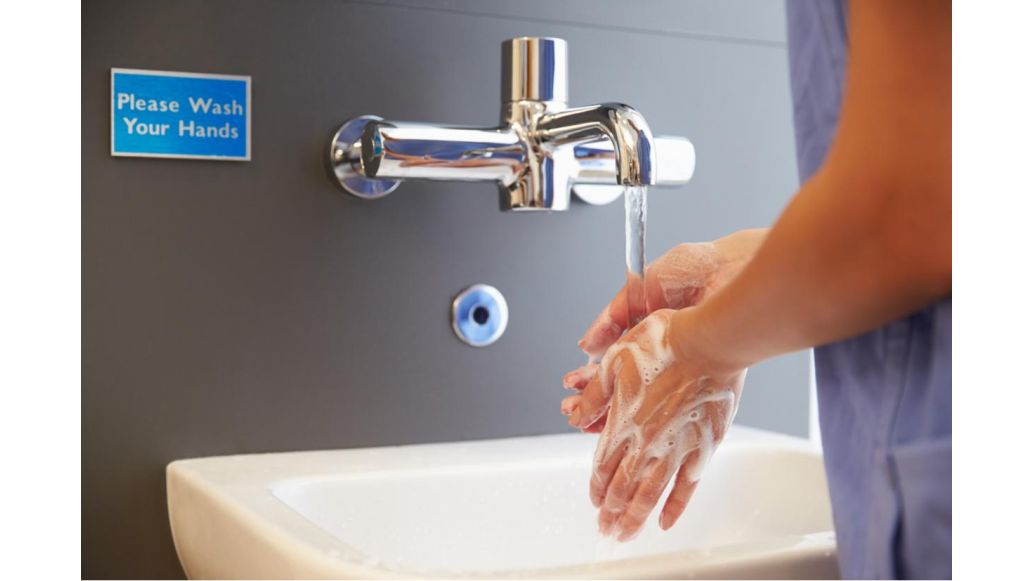A father whose son is waiting for him to be discharged from the hospital so he can come home and teach his child how to throw a baseball; a grandmother who organizes her 72-person family reunion every year; a little girl who loves glitter, playing soccer, and annoying her older sister; a student who is applying to colleges and looking forward to prom and graduation... All of these people’s lives and the lives of those who love them could be affected if these patients acquire a healthcare associated infection.
HAI Basics
Our #1 HAI Prevention Tip: Hand Hygiene
Six HAIs Reported to CMS
Partnering to Heal: Interactive Game
9 Standard Infection Precautions to Use with All Patients
Infection Prevention for 6 Hospital Acquired Infections
Infection Prevention Supplies
Read the Research on Healthcare Associated Infections
How Nurses Can Prevent Hospital Acquired Infections
Setting Your Infection Prevention Goals
More Resources
HAI Basics
What is a HAI?
HAI is an acronym that is used interchangeably for Hospital Acquired Infections and Healthcare Associated Infections. They are sometimes also referred to as nosocomial infections.
People get these infections while receiving care for other medical conditions. To be considered a HAI, the infection must not be present before that individual is under hospital care.
How many hospital patients get healthcare associated infections?
1 in 31 hospital patients have at least one healthcare associated infection while hospitalized. In 2015, this translated to 687,000 HAIs in U.S. acute care hospitals.1
Around 10% of patients with HAIs (72,000 hospital patients) died during their hospitalizations.1
Why is HAI prevention so important?
Preventing hospital acquired infections is part of your responsibility to your patients, your co-workers, and yourself. It’s an important part of keeping everyone healthy and safe.
HAI prevention practices can lead to an estimated $25-$31.5 billion in medical cost savings.2 Prevention saves hospitals money and allows medical professionals to focus on the primary condition of patients in their care.
Our #1 HAI Prevention Tip: Hand Hygiene

Clean hands are a crucial part of preventing the spread of deadly germs and HAIs to patients as well as preventing healthcare providers from acquiring infections from patients. The CDC’s ‘Clean Hands Count’ campaign highlights this important infection prevention step.
Check out this video created by Toronto General Hospital on the importance of hand washing!
This video may seem a little silly, using green paint to visualize germs, but it also highlights an important point and allows you to see why hand washing matters. When we don’t wash our hands, the germs spread and can lead to healthcare-associated infections.
Why don’t people always wash their hands?
Studies show that healthcare providers wash their hands less than ½ the times that they should.3 But why is this the case, if hand washing is so important to preventing healthcare associated infections?
One reason may be that healthcare workers may need to wash their hands as many as 100 times per 12 hour shift (depending on patient load and intensity of care).3
One study found a variety of risk factors for poor adherence to recommended hand-washing practices including:4
|
The study recommends educating staff on hand washing guidelines and agents. It states that past studies found that alcohol-based hand rubs that contained emollients were less irritating to the skin than the soaps tested.4
Other hand sanitizer options include 3M Avagard D Instant Hand Antiseptic, which meets CDC, AORN, and WHO Guidelines and is compatible with CHG (chlorhexidine gluconate) an 2XL Touch-Free Foam Hand Sanitizer a dermatologist-tested option with Vitamin E and Aloe to soothe dry and irritated skin.
Because increased hand-hygiene can lead to skin dryness, the study also recommends having free skin-care lotion available.4 3M Cavilon Moisturizing Hand Lotion is designed for healthcare professionals to restore skin’s moisture. It can be used under latex gloves without breaking them down and not affect the activity of CHG hand antiseptic products.
What’s “In” for Preventing Hospital Acquired Infections?

A study entitled The Health Professional's Role in Preventing Nosocomial Infections, declares that “Frequent hand washing remains the single most important intervention in infection control”.5 However, they also include other suggestions for practical ways to prevent HAIs.5
What’s In?
- Hand Washing
- As often as possible
- Use of alcoholic hand spray when appropriate
- Remove jewellery before washing
- Stethoscope
- Clean with an alcohol swab at least daily
- Gloves
- Supplement but do not replace hand washing
- Intravenous Catheter
- Thoroughly disinfect of skin before insertion
- Change administration sets every 72 hours
Hand Sanitizer vs. Soap and Water
The CDC recommends using alcohol-based hand sanitizer when your hands are not visibly dirty because it is potentially more effective at killing hand germs and less irritating and drying to your skin than soap. Plus, it’s easier to use during the course of care.3
A 2014 study on strategies to prevent healthcare associated infections recommended performing hand hygiene with an alcohol-based hand rub as well. However, the study recommended using an antimicrobial or nonantimicrobial soap when hands are visibly soiled and during norovirus or C. difficile outbreaks.6
Another study found that 100% hand-hygiene compliance using soap and water would take 16 hours of nursing time for a 24 hour shift. However, using alcoholic hand disinfection at the bedside to achieve 100% compliance requires only 3 hours.5
Hand Washing & Gloves
Gloves should be used as a supplement to hand washing. Even if you wear gloves, you still need to practice good hand hygiene. The CDC recommends changing your gloves if they are damaged, look dirty, have bodily fluids on them, or you are moving from a contaminated to a clean body site.3
Clean Hands Count: The Importance of Hand Washing from the CDC
Six HAIs Reported to CMS
Prospective Payment System (PPS) hospitals are required by Centers for Medicare and Medicaid Services (CMS) to report data on 6 HAI measures:
- CLABSI (central line-associated bloodstream infections)
- CAUTI (catheter-associated urinary tract infection)
- SSI (surgical site infections) for colon surgery
- SSI (surgical site infections) for abdominal hysterectomy
- CDI (clostridium difficile)
- MRSA (methicillin-resistant staphylococcus aureus)
Partnering to Heal: Interactive Game
Hospital acquired infection can have a significant effect on your patient’s health. Partnering to Heal is a free interactive game designed by the U.S. Department of Health and Human Services that allows you to see the effect of your decisions on your patient’s health.
See a glimpse of how the interactive game works in this video!
You can choose between five characters: a family caregiver, unit director, infection preventionist, medical student, or registered nurse. Then, as you move through the game, you make decisions that show how patient outcomes are impacted by medical judgement, communication, teamwork, and attention to infection control.
It’s a fun way to refresh your infection prevention skills and get other staff members to think about the importance of prevention and commit to taking steps to reduce HAIs.
Start playing Partnering to Heal now!
9 Standard Infection Precautions to Use with All Patients
While some situations and patient conditions require additional infection prevention precautions. The World Health Organization (WHO) recommends these nine precautions to take with all patients:7
Hand Washing
- Wash your hands after touching blood, bodily fluids, and contaminated items (whether or not gloves are worn). Wash your hands after gloves are removed and in between patient contacts.
- Use plain soap for regular hand washing and antimicrobial agents for specific circumstances.
Gloves
- Wear gloves while touching blood, bodily fluids, secretions, excretions, and contaminated items. Put on clean gloves before touching any mucous membranes or non-intact skin.
Gown
- Wear a gown during any exams, procedures, and patient care that will likely cause splashes/sprays for blood, bodily fluids, and other secretions/excretions.
Mask, Eye Protection, and Face Shield
- Wear a mask and eye protection or a face shield during any exams, procedures, and patient care that will likely cause splashes/sprays for blood, bodily fluids, and other secretions/excretions.
Patient Care Equipment
- Ensure all reusable equipment is properly cleaned and processed before use with a new patient.
Environmental Control
- Ensure all environmental surfaces are properly cleaned, disinfected, and maintained following adequate procedures for routine care.
Linen
- Used linen soiled with blood, bodily fluids, secretions, and excretions should be handled in a manner that prevents skin and mucous membrane exposure and avoids transfer to other patients and environments.
Occupational Health and Bloodborne Pathogens
- Be careful to prevent injuries when using scalpels, needles, and any other sharp implements.
- Use ventilation devices as an alternative to mouth-to-mouth resuscitation.
Place of Care of the Patient
- If the patient contaminates the environment or does not assist in maintaining appropriate hygiene, place them in an isolated (or separate) room.
Infection Prevention for 6 Hospital Acquired Infections
Learn more about six HAIs and specific prevention steps below.6,8
- CLABSI (central line-associated bloodstream infections)
- CAUTI (catheter-associated urinary tract infection)
- SSI (surgical site infections) for colon surgery
- SSI (surgical site infections) for abdominal hysterectomy
- CDI (clostridium difficile)
- MRSA (methicillin-resistant staphylococcus aureus)
CLABSI (central line-associated bloodstream infections)
- How is this infection typically caused: Germs can enter the body and cause blood infections when a central line tube is put in a large vein and not placed correctly or kept clean
- CLABSI infection rates in national acute care hospitals: 50% decrease in CLABSI between 2008 and 2014
- Prevention Steps:
- Insure healthcare personnel are educated in central venous catheter (CVC) insertion, care, and maintenance and CLABSI prevention
- Provide clear guidelines on indications for CVC insertion based on evidence-based references
- Create a checklist to ensure infection prevention practices occur during CVC insertion
- Bathe ICU patients over 2 months old with chlorhexidine preparation on a daily basis
- Perform hand hygiene prior to catheter insertion or manipulation
- Create and use an all inclusive catheter cart
- Under planned/controlled conditions, avoid using the femoral vein for central venous access in obese adult patients
- When inserting an internal jugular catheter, use ultrasound guidance
- Use an alcoholic chlorhexidine antiseptic for skin preparation and maximum sterile barrier precautions during CVC insertion
- Ensure appropriate nurse-to-patient ratio and limit the use of float nurses in the ICUs
- Before accessing the catheter, disinfect hubs, needleless connectors, and injection ports
- Remove nonessential catheters
- Non-tunneled CVCs, in adults and children, change transparent dressings and perform site care with a chlorhexidine-based antiseptic every 5-7 days and gauze dressings every 2 days or immediately if the dressing is soiled, loose, or damp
- Replace administration sets not used for blood, blood products, or lipids at intervals less than 96 hours
- Use antimicrobial ointments for hemodialysis catheter-insertion
- In adult patients, use antiseptic or antimicrobial impregnated CVCs
- In patients over 2 months old, use chlorhexidine-containing dressings for CVCs in patients
- In preterm infants, use silver zeolite impregnated umbilical catheters
- Use an antiseptic-containing hub/connector cap/port protector to cover connectors
- Use antimicrobial locks for CVCs
- Provide surveillance for CLABSI in ICU and non-ICU settings
CAUTI (catheter-associated urinary tract infection)
- How is this infection typically caused: If a urinary catheter is not put in correctly, not kept clean, or left in a patient for too long, germs can travel through the catheter leading to an infection in the kidneys or bladder
- CAUTI Infection rates in national acute care hospitals: No overall change in CAUTI infection rates from 2009 and 2014
- Prevention Steps:
- Provide written guidelines for catheter use, insertion, and maintenance
- Ensure only trained personnel insert urinary catheters
- Ensure supplies for aseptic technique are available and conveniently located
- Create and implement a system for documenting:
- Physician order for catheter placement
- Indications for catheter insertion
- Name of personel who inserted the catheter
- Date and time of catheter insertion
- Nursing documentation of placement
- Daily presence of catheter and maintenance care tasks
- Criteria for removal and justification for continued use
- Date and time of catheter removal
- Perform surveillance for CAUTI if indicated (based on regulatory requirements or facility risk assessment)
- Provide education for healthcare personnel on urinary catheter insertion, care, maintenance, and removal
- Assess healthcare personnel’s competency in catheter use
- Insert urinary catheters only when necessary, leave in place only as long as indications remain, and consider other methods, like intermittent catheterization when appropriate
- Practice hand hygiene before catheter insertion and before or after manipulation of the catheter site/apparatus
- Use sterile gloves, drape, and sponges, sterile/antiseptic solution, and single use lubricant jelly
- Use as small a catheter as possible
- Ensure appropriate management of indwelling catheters
- Implement a program to identify and remove catheters that are no longer necessary
SSI (surgical site infections) for colon surgery
- How is this infection typically caused: If germs get into an area where surgery is or was performed, it can cause a surgical site infection involving the skin, tissue, organs, or implanted material
- SSI (colon surgery) infection rates in national acute care hospitals: 2% decrease in SSI between 2008 and 2014
- Prevention Steps:
- Administer antimicrobial prophylaxis based on evidence-based guidelines
- Don’t remove hair at operating site unless it will interfere with the operation, don’t use razors
- Control blood glucose level during the immediate postoperative period
- During perioperative period maintain normothermia (temperature of 35.5°C or more)
- Optimize tissue oxygenation during and directly following surgical procedures using mechanical ventilation by administering supplemental oxygen
- Use alcohol-containing preoperative skin prep agents (if no contraindication exists)
- Use impervious plastic wound protectors for gastrointestinal and biliary tract surgery
- Perform surveillance for SSI
- For high risk procedures, screen for S. aureus and decolonize surgical patients in the preoperative setting
- Perform antiseptic wound lavage
- Observe and review operating room environment and personnel and practices in the postanesthesia care unit, ICU, and surgical ward
SSI (surgical site infections) for abdominal hysterectomy
- How is this infection typically caused:If germs get into an area where surgery is or was performed, it can cause a surgical site infection involving the skin, tissue, organs, or implanted material
- SSI (abdominal hysterectomy) infection rates in national acute care hospitals:17% decrease in SSI between 2008 and 2014
- Prevention Steps:
- See prevention steps in #3
CDI (clostridium difficile)
- How is this infection typically caused: When a patient takes antibiotics, it destroys good bacteria that help prevent infection. During this time, patients can get sick from C. diff bacteria that causes potentially deadly diarrhea, which can be spread in healthcare settings
- CDI infection rates in national acute care hospitals: 8% decrease in CDI between 2011 and 2014
- Prevention Steps:
- Encourage use of antimicrobials when appropriate
- Use contact precautions (hand hygiene, gloves, gown, single patient room) for infected patients
- Ensure all equipment and environment is cleaned and disinfected
- Educate healthcare personnel, environmental service personnel, and hospital administration on C. diff, educate patients and their family when appropriate
- Place patients with diarrhea under CDI precautions while test is pending
- During outbreaks, perform hand hygiene with soap and water as the preferred method before exiting the infected patient’s room
- After the patient becomes asymptomatic, continue contact precautions until hospital discharge
- Use EPA-approved sporicidal disinfectant or diluted sodium hypochlorite for environmental cleaning and disinfection
- Create and implement an antimicrobial stewardship program
MRSA (methicillin-resistant staphylococcus aureus)
- How is this infection typically caused: MRSA is a bacteria that is typically spread by contaminated hands. In healthcare settings, this bacteria can cause serious blood infections.
- MRSA infection rates in national acute care hospitals: 13% decrease in MRSA between 2011 and 2014
- Prevention Steps:
- Promote CDC/WHO hand hygiene recommendations
- Conduct a MRSA risk assessment and implement a MRSA monitoring program, provide data and outcome measures to key stakeholders (senior leadership, physicians, nursing staff, etc.)
- Educate healthcare personnel, patients, and patient families about MRSA
- Use contact precautions for MRSA colonized and MRSA infected patients
- Ensure cleaning and disinfection of equipment and the environment
- Implement an alert system that notifies personnel of new, readmitted, or transfered MRSA colonized or MRSA infected patients
- Screen personnel for MRSA infection/colonization if they are epidemiologically linked to a cluster of MRSA infections
- Provide MRSA decolonization therapy to MRSA colonized patients and ICU patients
- Use gowns and gloves for all contact with patients and the patient care environment
Infection Prevention Supplies
While there is a huge array of products available for infection prevention, here are some commonly used supplies.
Hand Hygiene
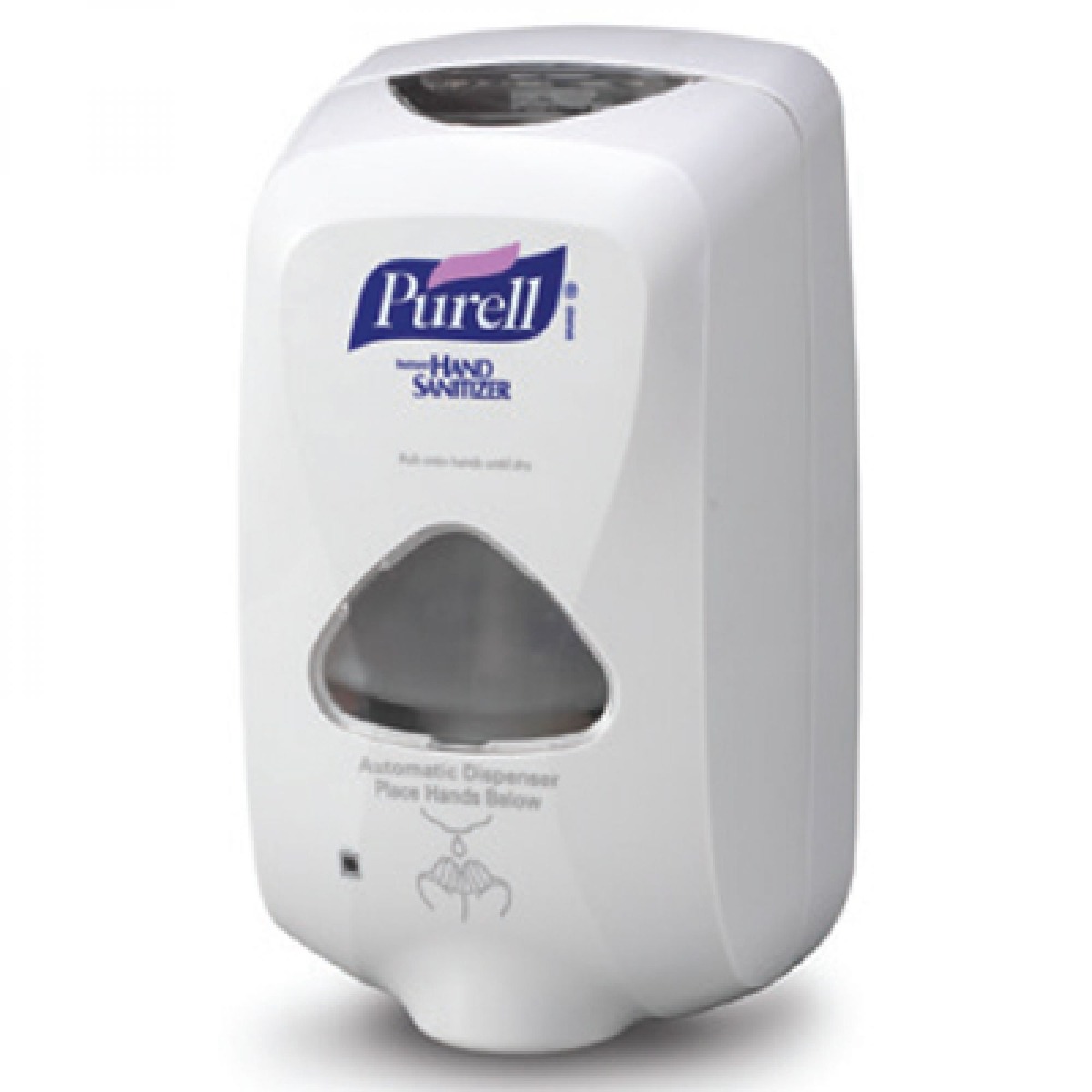


- Purell TFX Gel Refill: Kills 99.9% of germs on contact, this wall dispenser refill can be used in hospitals by both patient’s family members and healthcare personnel, while the smaller bottles can be kept at a nurses’ station or in your pocket
- Hibiclens Antiseptic/Antimicrobial Skin Cleanser: Effectiveness increases with use, due to a cumulative effect, without causing skin irritation, dryness, or discomfort.
- 2XL Touch-Free Foam Hand Sanitizer: This foam kills 99.9% of common germs in seconds, while softening and nourishing hands
- Eucerin Moisturizer: Safe for even the most sensitive skin, this non-greasy, fast absorbing formula is fragrance, dye, and paraben free.
- Alcohol Free Hand Sanitizing Wipes: Alcohol-free wipes kill 99.99% of bacteria, aloe, glycerin, and Vitamin E moisturize your hands during use
- Cavicide and CaviWipes: Kills TB, MRSA, HIV, HBV, HCV, and more, medical grade disinfectant is available as a disinfectant liquid or wipes, virucidal (hydrophilic and lipophilic), bactericidal, tuberculocidal, and fungicidal, excellent for use on non-porous surfaces including stainless steel, plexiglass, chrome, plastics, and painted surfaces in hospitals with close patient contact and those that handle critical care
- Lumin Multi-Purpose UV Sanitizer: This UV sanitizer can be used to disinfect household items, CPAP masks and accessories and decontaminate N95 and general-use face masks. It has a 99.9% kill rate of most bacteria and viruses in just 5 minutes
- Rolyan Smart Splint Bath: This splint bath provides a 99.99% kill rate of microbes in the water and utilizes both UV sterilization cycling and a high-heat effective sterilization of the bath/li>
- MadaCide FD Germicidal Solution: A one step solution that kills Influenza A, HIV, Hepatitis B and C, TB, MRSA, VRE, and SARS without damaging cement, plastics, rubber, steel, aluminum, brass or other metal
- SaniZide Plus: Hospital grade disinfectant fights against TB, HIV, Hepatitis B, MRSA, and more, ideal for use in patient rooms or even the operating room
- Matt Kleen: Disinfects to prevent the spread of HIV, MRSA, tuberculosis, and other common germs and diseases, can be used on mats, shower floors, exam tables, and more
- Skintergrity Wound Cleanser: Wound cleanser spray helps clean wounds and maintain a moist wound environment
- Vashe Wound Solution: Solution is ideal for cleaning, debriding, and removing microorganisms in the wound
- SilvaSorb: Absorbent dressing absorbs more than 5 times its weight in exudates, and provides a controlled-release of antimicrobial silver
- More Wound Care Products: Explore more cleaners, bandages, specialty dressings, tape, gauze, and more
- MicroBlock Electrodes: Like other electrode pads, MicroBlock pads kill and inhibit the growth and spread of common bacteria, but these benefits also expand to a zone around the pad for a larger area of coverage and increased infection prevention
- Remember electrodes should not be shared between patients for infection prevention purposes!
- Sammons Preston Quick Clean Gait Belts: Easy to grab and wipe clean and latex free.
- Skilcare Wipe Clean Pillows - 3/Pack: These vinyl-covered pillows can be wiped with spray cleanser or disinfecting wipes and then they're ready for the next patient - no laundering required
- Single Patient Use Products: Products for single patient use help prevent cross contamination, a wide variety of products are available including patient slings, sphygmomanometers, stethoscopes, transfer sheets, and more
- Follow universal infection prevention precautions
- Follow hand hygiene guidelines, using soap and water or alcohol-based hand rubs
- Prevent urinary catheterization when possible, if necessary intermittent catheterization is preferred
- Irrigate cutaneous wounds between dressing changes, debriding necrotic material effectively and dressing a wound appropriately to absorb exudates
- Ensure neutropenic patients receive frequent oral care
- Use full barrier precautions (gloves, gown, cap, mask, sterile field) during CVC insertion
- As soon as it is deemed unnecessary, promptly remove catheter
- Replace catheter dressings immediately when damp, soiled or loosened
- Replace IV administration sets, extensions and secondary sets every 72 hours (unless infection is suspected/documented)
- Educate patients on infectection precautions
- Create a safe environment for healthcare personnel where errors and near misses can be reported and reviewed to improve the system and prevent future errors
- Focus on the task at hand - if something is distracting you during your task (including your own thoughts) take steps to limit it
- Create a personal checklist to keep your thoughts organized and ensure the proper steps are followed
- CDC: Healthcare-Associated Infections
- Healthypeople.gov: Healthcare-Associated Infections
- Health.gov: Health Care-Associated Infections
- WHO: Infection Prevention and Control
- Agency for Healthcare Research and Quality: AHRQ’s Healthcare-Associated Infections Program
- Centers for Disease Control and Prevention. (2020). Healthcare-associated infections. CDC. Retrieved from https://bit.ly/2tGX3x4
- Healthypeople.gov. (2020). Healthcare-Associated Infections. Retrieved from https://bit.ly/30Fj6k5
- Centers for Disease Control and Prevention. (2019). Hand Hygiene in Healthcare Settings. CDC. Retrieved from https://bit.ly/37bfbxI
- Recommendations of the Healthcare Infection Control Practices Advisory Committee and the HICPAC/SHEA/APIC/IDSA Hand Hygiene Task Force. (2002). Guideline for Hand Hygiene in Health-Care Settings . CDC. Retrieved from https://bit.ly/3azNuku
- Saloojee, H., & Steenhoff, A. (2001). The health professional's role in preventing nosocomial infections. BMJ Journals. Retrieved from https://bit.ly/2NMBjHg
- Yokoe, D.S., et al. (2014). A Compendium of Strategies to Prevent Healthcare-Associated Infections in Acute Care Hospitals: 2014 Updates. Retrieved fromhttps://bit.ly/2tGigat
- WHO. (n.d.) Hospital Hygiene and Infection Control. Retrieved from https://bit.ly/38DgpSX
- Centers for Disease Control and Prevention. (2016). National and State Healthcare Associated Infections Progress Report. CDC. Retrieved from https://bit.ly/3axHkB6
- AMN Healthcare. (2015). The Nurse's Role in Preventing Hospital-Acquired Infections. Retrieved from https://bit.ly/36g5Wv1
Environmental & Equipment Cleaning, Sanitizing, and Disinfecting
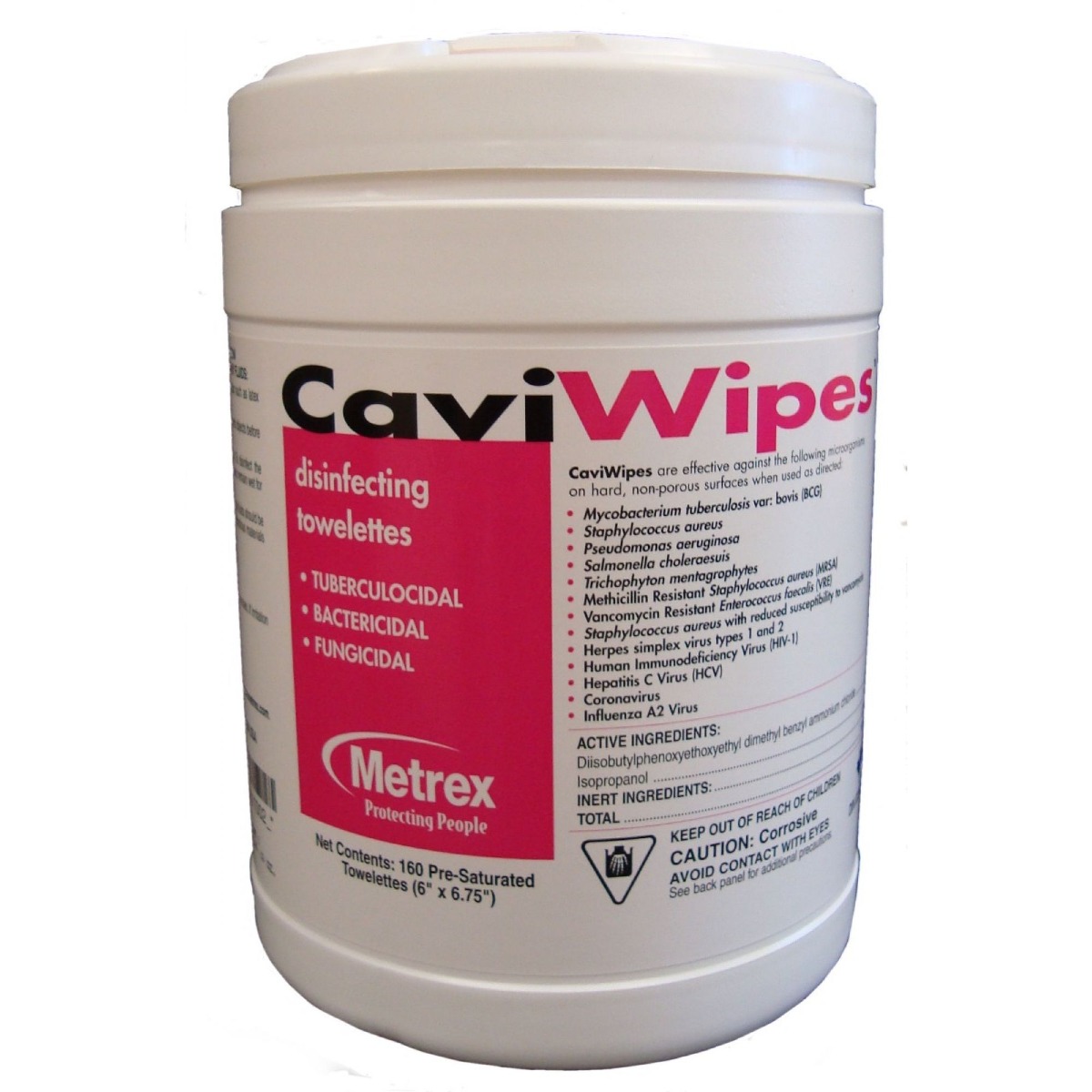


Wound Care



Other
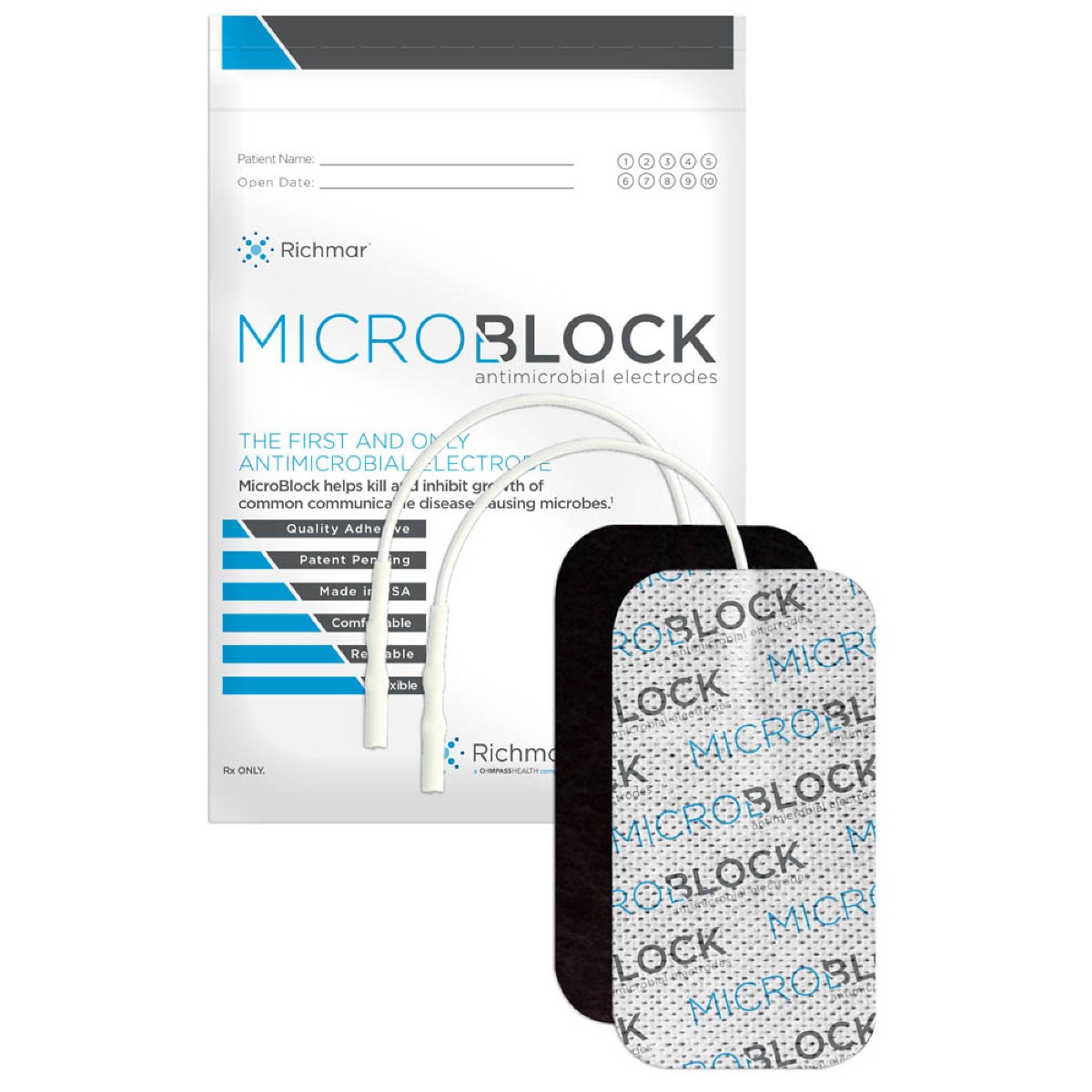

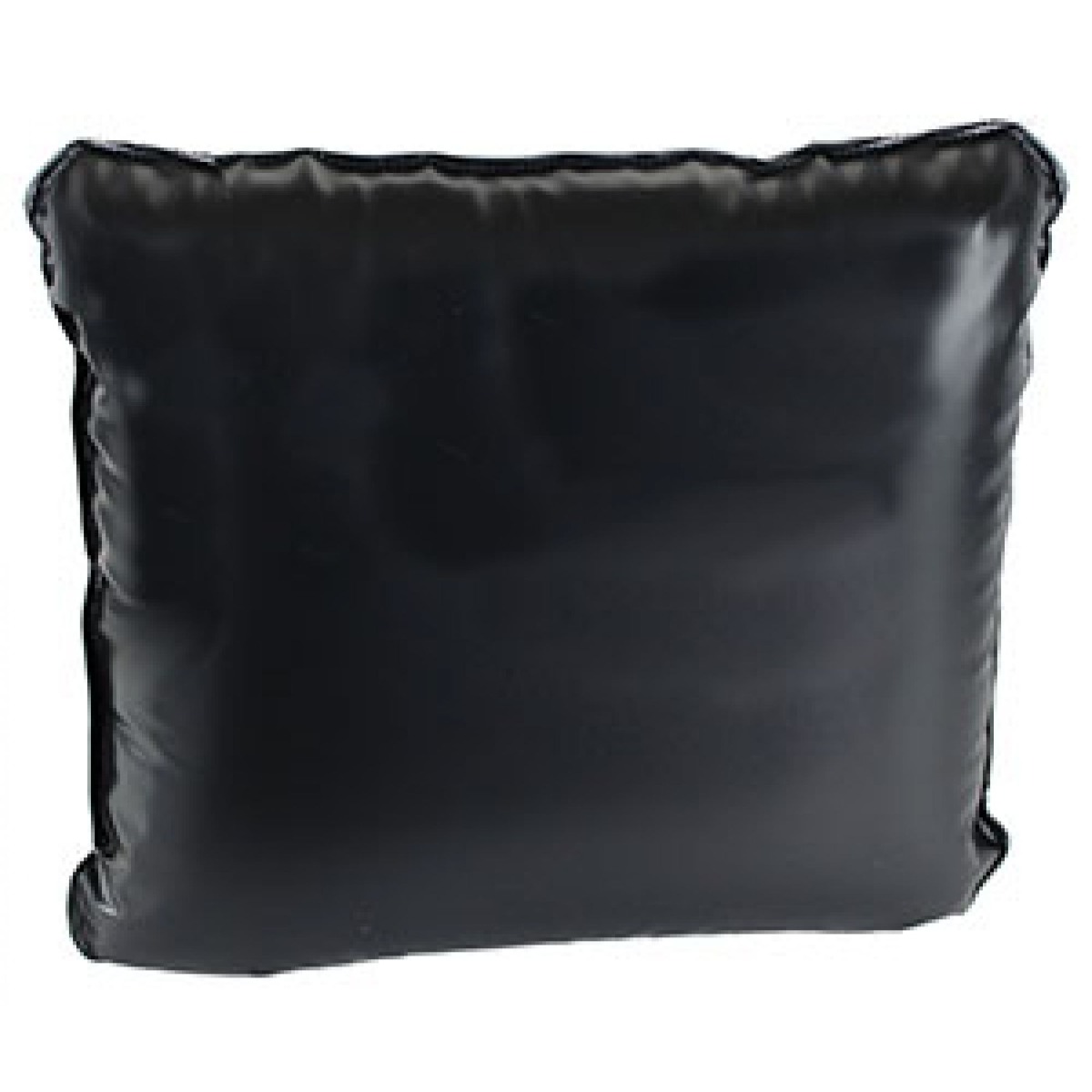
Read the Research on Healthcare Associated Infections
Title:A Compendium of Strategies to Prevent Healthcare-Associated Infections in Acute Care Hospitals: 2014 Updates
Summary: Review a summary of HAI prevention strategies and the quality of evidence associated with them. This study expands on the precautionary steps mentioned in the section above.
Title:Evidence-Based Programs and Strategies for Reducing Healthcare-Associated Infections in Critical Access Hospitals
Summary: Reviews successful healthcare associated infection prevention activities in critical access hospitals. Includes hospital and state based implementations of evidence-based programs.
Title:National and State Healthcare Associated Infections Progress Report
Summary: Includes a progress report on six measures of HAIs including national and state-level data.
Title: Healthcare‐acquired infections: prevention strategies
Summary: Examines a variety of HAI prevention strategies including environmental control, which is less commonly examined. Evaluates methods of cleaning including bleach, ultraviolet light devices, hydrogen peroxide vapor, and routine disinfectants (quaternary ammonium compounds).
How Nurses Can Prevent Hospital Acquired Infections
Nurses can make a big difference in preventing hospital acquired infections through evidence-based practice, nursing research, and patient education. Following these basic steps can help keep your patients healthy.9
Setting Your Infection Prevention Goals
Now that you know more about infection prevention, work to set up a plan for your hospital. It’s not enough to aim for a prevention rate at the national baseline or slightly above the other hospitals around you.
For your patients and your coworkers, your goal should always be zero HAIs.
Get started by forming a committee made of a variety of healthcare personnel from nurses and physicians, all the way up to senior leadership. Decide on evidence-based practices and steps you can take to prevent HAIs, from staff education to written guidelines to a new culture that admits errors and learns from them.
And choose how you plan to measure your new practices from whether you focus on one HAI to start with or tackle the main six to how you share these statistics with your staff. Don’t forget to schedule your next meeting so you can continue to build on your current work. For more infection control resources, check out the links below!
More Resources
References
Medical Disclaimer: The information provided on this site, including text, graphics, images and other material, are for informational purposes only and are not intended to substitute for professional medical advice, diagnosis or treatment. Always seek the advice of your physician or other healthcare professional with any questions or concerns you may have regarding your condition.








 France
France Australia
Australia